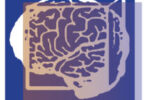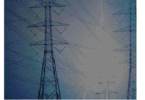by Fred Steinhauser, OMICRON electronics GmbH, Austria
Since Johannes Gutenberg there are ways to typeset texts and produce them in a mechanized way. But until the broad availability of computers, this was reserved for a limited group of professionals. The word processing features in modern PCs have brought this into the reach of many.

When we create texts, we write our words with characters of a certain shape and style. Even for our handwriting, we all have learned a “font” according to the local standard of the time. Often, we can guess from the handwriting style where a person comes from. As part of my technical education I have learned standard lettering for labeling technical drawings, an art that I still master to this day.
Print shops producing newspapers and books had their fonts, but for normal people, the choices were rather limited. The only other font in reach was the one on typewriters, and they were more or less all the same until the exchangeable typeballs on the IBM Selectric typewriters came up. The text-I/O for early computers was often through electric typewriters, close to Telex terminals (“Teletypes”) with a ridiculously small character set, often restricted to capital letters only.
Next came CRT terminals. They lacked graphic capabilities to draw nicely shaped characters, were “text only” and displayed the characters in a dot matrix, starting out with small dimensions. The character patterns were stored in a so-called character ROM and the pixels were clocked out to the CRT controller, thus minimizing computing power requirements.
The snippet below from a font map shows some characters with a 5 x 7 pixel resolution. There is not even space foreseen for descenders, so the corresponding characters are squeezed up to the baseline in an ugly way. Early dot matrix printers suffered from the same restrictions. These early pixel fonts were the predecessors of the bitmap fonts or raster fonts later developed with higher resolutions to make the character look decent. Then, the processing power and graphic capabilities of personal computers evolved and with that the possibilities for always more artful typesetting and displaying sophisticated fonts. With the upcoming of the vector fonts or outline fonts, the characters are no longer described as pixel patterns, but by mathematical curves that can be arbitrarily scaled.
Today’s computer operating systems and word processing programs come with a vast selection of pre-installed fonts and many more can be downloaded from the internet. This made the use of fonts and styles as easy as never before.
In the old days, typesetters had to be selective. Using too many variants at a time would have been too costly. With the tools of today, such restrictions no longer apply and it takes some discipline to use the possibilities wisely. The extreme example of unwise use is the infamous invitation card for a child’s birthday party with an exuberant use of different fonts, styles, sizes and, of course, colors. Again, a case of “more must be better.” But the opposite is true, less is more. Good typography is always guided by the economic and conscious use of the options.
This is also reflected in the templates that are provided by publishers and conference organizers for papers and presentations. Let’s put it this way: there are some good ones. They are easily recognizable because of their parsimony. A few font styles, as clear as possible. Headings and indentation levels are well chosen. A stage for the content to shine.
Biography:

Fred Steinhauser studied Electrical Engineering at the Vienna University of Technology, where he obtained his diploma in 1986 and received a Dr. of Technical Sciences in 1991. He joined OMICRON and worked on several aspects of testing power system protection. Since 2000 he worked as a product manager with a focus on power utility communication. Since 2014 he is active within the Power Utility Communication business of OMICRON, focusing on Digital Substations and serving as an IEC 61850 expert. Fred is a member of WG10 in the TC57 of the IEC and contributes to IEC 61850. He is one of the main authors of the UCA Implementation Guideline for Sampled Values (9-2LE). Within TC95, he contributes to IEC 61850 related topics. As a member of CIGRÉ he is active within the scope of SC D2 and SC B5. He also contributed to the synchrophasor standard IEEE C37.118.







